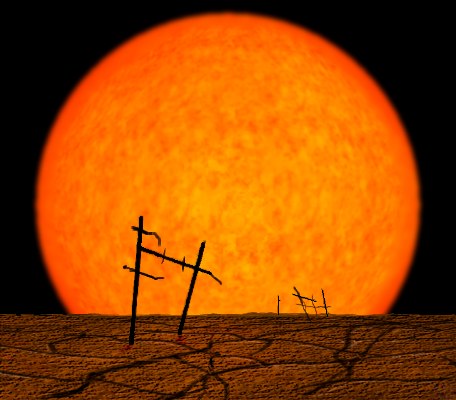Red giants are stars that have exhausted their core hydrogen and helium and expanded to millions of miles wide. They burn heavier elements in their cores, resulting in a giant star with a swollen atmosphere.
In the final stage of its stellar evolution, a red giant is a large, glowing star of almost mass (probably 0.31 to 8.1 [M☉]). The red-giant phase is the longest-lived stage in the lifetime of a star, lasting for many trillions of years; after this point, it will become a white dwarf and generate light for about another trillion years before it becomes dark and inert.
Red giants, also known as red supergiants, are stars in their final phase of life. Red giant stars are large and extremely luminous stars that have exhausted the supply of hydrogen fuel depositing deep in their base. Leads spend 90 percent of their lifetime fusing hydrogen atoms together to form helium atoms in nuclear fusion. When this fuel is depleted, the star expands into a huge giant and fuses helium atoms instead.
An ordinary star becomes a red giant star when it uses up all its nuclear fuel. For example, the Sun can become a red giant in around 5.1 billion years. The Sun will expand to about 1 AU (150 million km). That is nine times the current distance from Earth to the Sun. It will become so large that the Sun will swallow mercury and venus.
Red giants are stars with a mass of less than 1.4 solar masses and a diameter greater than ten solar diameters. They are in the phase of their life cycle immediately preceding a supernova. Red giants’ low surface temperature emits light at infrared wavelengths. This makes red giant stars ideal candidates for early-type infrared astronomy observations since they dominate the IR portion of the electromagnetic spectrum and can be observed by ground-based telescopes.
The sun is a typical red giant star, but it’s too hot to be habitable. Red giants can get as hot as 5,400 K (Kelvin) in their core. For comparison, that’s over 9 times hotter than our current sun! It won’t happen for a few billion years, but when it does… keep an eye out for Mercury and Venus. They may have disappeared completely by then!
Temperature Of Red Giant
The red giant is a star in the late stages of stellar evolution. They have exhausted their hydrogen and helium fuel supply and now burn heavier elements, such as carbon and oxygen. The star’s outer layers expand significantly to become a red giant, so its radius may increase by hundreds of times. The surface temperature is low compared to the Sun’s surface temperature, but still, thousands of degrees Celsius or tens of thousands Fahrenheit, depending on their mass. The outer layer is flattened and tenuous, making the radius dense and the surface temperature low, from 5,000 K to 9000 K.
Red giant stars are so named because they have a very high temperature and luminosity. They are not observed with the naked eye but through small telescopes or binoculars. These stars are relatively large, round in shape, and vary from red to white. Red giants take up to a million years to cool down and end their life cycle as white dwarfs. The temperature of a star is the average kinetic energy per particle in the lead. The hotter the gasses are, the more particles move about.
The sun has a surface temperature of 5,777 °C (9,941 °F), which is considered hot. However, at its core, it burns at 15.7 million K and has a luminosity (energy emitted as light) 390x that of our own star. This makes for an intense pressure that raises its temperature to 1,000,000 K – enough to fuse hydrogen atoms into helium.
![]()
